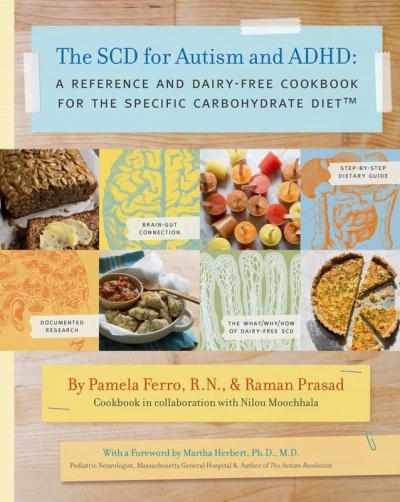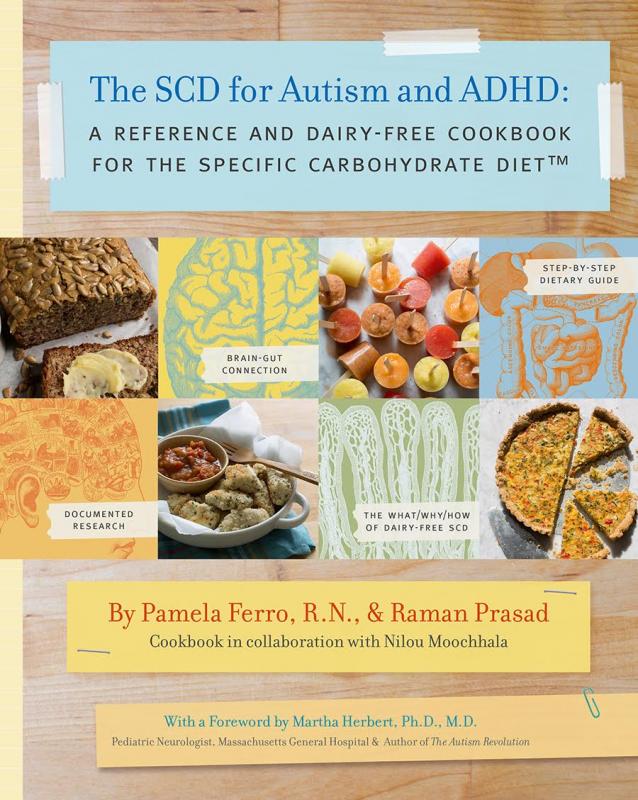New book aims to help those with autism, ADHD through diet
Janice Sousa’s husband thought she was going to starve their son Reece when she insisted on trying the Specific Carbohydrate Diet.
Reece has autism, is nonverbal, has behavioral issues and had a wicked addiction to juice boxes. After seeing doctors from the South Coast to Boston, she was ready to try anything that might help her son.
In the fall, Sousa heard Pam Ferro, RN, speak at the Mattapoisett Library about the changes the SCD can have on kids with autism.
Ferro is the co-founder of Hopewell Associates in Mattapoisett and specializes in treating people with autism. Her new book, “The SCD for Autism and ADHD,” co-authored with Raman Prasad and Nilou Moochhala, focuses on alleviating the symptoms of the two conditions through the diet.
“What’s happening in the gastrointestinal system is definitely impacting the brain,” said Ferro.
Her research led her to discover that many people with autism and ADHD have intestinal problems that keep their body from properly processing and absorbing nutrients from foods such as gluten and sugar. The digestion issues in the intestine, where much of the immune system resides, lead to neurological problems and pain, said Ferro.
“Children with autism are going from nonverbal to verbal. Children with significant behavior issues stopped screaming,” Ferro explained.
The Specific Carbohydrate Diet was a revelation to Ferro when she learned about it more than 10 years ago. With many similarities to the paleo diet, the SCD cuts out gluten, sugars, soy, and for those with autism, milk.
Ferro learned about the diet from Elaine Gottschall, whose book “Breaking the Vicious Cycle” brought the SCD to light in the 1990s. Not a “new fad diet,” it was first used 100 years ago.
Gottschall discovered it after doctors offered a bleak prognosis for her daughter, who suffered from digestive issues that had debilitating physical and psychological effects. The SCD allowed her to live a normal life.
Gottschall has passed away, but Ferro, Prasad and Moochhala hope their updated version of the diet will help thousands of families.
Ferro met Prasad through Gottschall, and the two bonded over their advocacy for the SCD.
Prasad discovered the diet after living for seven years with ulcerative colitis that left him running from bathroom to bathroom. After adhering to the SCD, his symptoms disappeared. He has since written about the diet and has his own recipe blog to help others eat well within the restrictions of the diet.
While Prasad can talk about the pain he faced with his illness, many with autism cannot express their pain and discomfort verbally, said the authors. However, there are other indications: those on the autism spectrum may roll their bellies on an exercise ball for relief, bang their heads, repeat behaviors and other obsessive tendencies.
The authors say the SCD alleviates or even stops many of these behaviors, but it does take planning.
At a recent book signing at the Mattapoisett Library, the authors discussed how their book sets families up for success and healing.
“The crux of our book is: If you focus on digestion, the behavioral changes will follow,” Prasad said.
The book gives step-by-step instructions on how to implement the diet and has practical but gourmet recipes that can be made in advance and frozen.
“All of the recipes are very kid focused,” said Moochhala, Prasad’s wife and the main recipe developer for the book.
Sousa, one of several parents at the signing that has tried the SCD, said her son, now 8, is a changed kid since she started the diet in January.
“I got him away from his juice boxes, which was hell. It was a battle of wills,” she said. “It wasn’t just a change in his diet – in two weeks he was a calmer, he was more focused, he would sit still longer. More responsive.”
All of his teachers noticed the difference, and Reece has even started speaking some and interacting with his peers.
Sousa has been combing through the new book and trying out recipes.
“It makes it so much easier for a parent to have a guide. Everything’s here,” she said.
That authors say that was their goal in creating the book, and helping those with autism experience relief.
“They are very bright kids who are locked into illness, and they can’t tell anybody that they’re sick,” said Ferro. “They have gifts and trouble like anyone else. What we’re looking to do is take care of the problems that get in their way, not so much their autism.”
Read more about the book at www.scdrecipe.com.

















